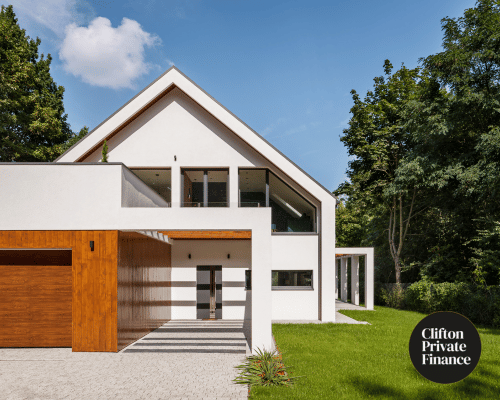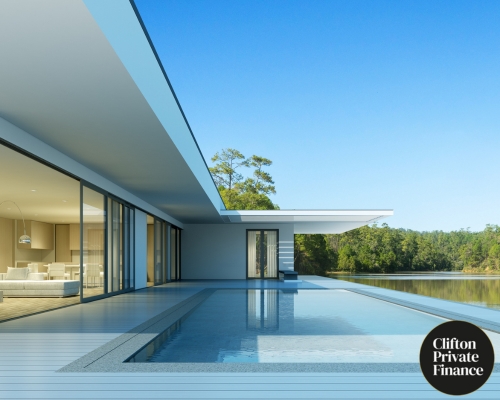Property Development Finance

Quick Links
What is Property Development Finance?
The Different Types of Development Finance
Short Term Development Finance
What Can Development Finance Be Used For?
The Pros and Cons of Development Finance
Property Development Finance Costs and Fees
Development Finance Calculator
Development Finance Interest Rates
What Property Development Finance Lenders Are There?
How to Apply for Development Finance
Our development finance service:
- Quickly compare quotes from 40+ lenders, with tailored quotes for your project
- Development finance from £50,000 to £50m
- Market leading development finance rates
- Loans up to 100% of development finance cost
- Development exit funding for projects near completion
- Finance with no exit or early redemption fees
- Refinance for projects behind schedule
- Options for first time developers
- Finance solutions for unihabitable properties
- Conversion finance e.g. permitted developments, care home conversions
- Joint venture finance options
- Finance for major home renovations
- Terms up to 36 months
- Hunter style revolving credit finance facilities for experienced developers
- Finance for new build, conversion or refurbishment developments including mixed use and student accommodation
- We can help source finance for land, commercial to residential conversions, assets such as care homes, barn conversions, places of worship, petrol stations, fisheries, airspace development loans (with acceptable security) and charities
Our strength is our ability to access a wide range of funding solutions from high street and private banks, specialist lenders, family offices and wealth managers. We also have connections with private investor fund groups.
Call us on 0203 900 4322 to discuss your requirements or book a free consultation below.
Written by: Sam Hodgson
Last Updated: 19/12/2024
Key Takeaways
- Development finance is used for property construction, conversion, or heavy refurbishment, with funds released in stages.
- This can cover site purchase, construction, and renovations, repayable after project completion via sale or refinancing.
- Borrowing ranges from £50,000 to £25M with terms between 1 month and five years.
- Interest is usually paid in bulk at the end of the project to ease cash flow.
What is Development Finance?
Development finance is a specially designed, short-term loan to finance property construction, conversion, or heavy refurbishment.
It's the fuel that powers the engine of property development and is an essential tool for ambitious developers who don’t have large volumes of cash on hand to fund their projects.
Whether you're building from the ground up, converting a space, or refurbishing an existing property, development finance provides the essential funding needed to bring your vision to life. Designed for flexibility, this short-term financial solution is tailored to the unique demands of property development, with funds typically released in stages to align with your project's progress.
Unlike traditional loans, development finance caters specifically to the complexities of construction and renovation, allowing developers to efficiently manage cash flow and minimise unnecessary costs.
The process is relatively simple:
- Once you've secured your loan, it's usually utilised to fund the project only during the build.
- After completing your project, you can repay your loan through the sale of your property or by refinancing it to a standard residential, buy-to-let, or commercial mortgage (depending on what you’re using the property for).
But what sets property development finance apart from other loans?
Initial funds are typically used to purchase the site or refinance existing debt. Following this, the remaining funds are released in stages to cover construction costs, with the lender monitoring your progress.
This guide explores the key aspects of development finance, including its advantages, application process, and the various options available.
How Our Development Finance Quote System Works

Tell us your project details
- Your contact details
- Your purchase price
- Purchase costs
- Property location
- Build costs
- Contingency (min 5%)
- Professional costs & charges
- Total GDV
- Build term
- Loan term
- Maximum loan required (Y/N)

Hit 'search'
Press 'search', and our software automatically searches over 40 development finance lenders, instantly giving you a side-by-side comparison of quotes from each lender that could facilitate your project:
Then, you can filter your results by maximum loan size / lowest total cost / minimum deposit requirement, etc., play around with your figures if needed, or save your project and return later.
This process saves you hours spent applying to each lender individually - many of whom may not be able to fund your specific project (or would offer unfavourable terms).

Submit your project appraisal
We then help you submit your project appraisal and development schedule to up to three lenders with the best terms for your needs.
We package this up for you automatically and pitch it to each relevant lender in a professional and efficient format that they understand - so they're quick to come back with a Decision in Principle (DIP).
It's a simple and streamlined process, and we regularly secure DIPs within 48 hours for our clients that come through our quote system.

Credit approval
Once you have the terms, you can select the best lender for your project and proceed with your credit approval. The specific lender will confirm what's needed and how long it will take.
When everyone's ready, you can nominate a date for completion.
Sound too good to be true? Try it and see for yourself!
Get Development Finance Quotes »
Latest Property Development Finance Rates We've Secured:
Finance Rates from 1 - 18 months Rates up to 80% LTV net As at 17th January 2025 Finance Rates from Up to 24 months Rates up to 70% of GDV As at 17th January 2025 Finance Rates from 1 to 18 months Rates up to 80% LTV net As at 17th January 2025 Thank You for your interest - please complete the form below and a member of our team will be in contact.Flipping Property?
Buying, Renovating & Selling (or Letting)
0.55% pm
Ground Up Development
New Builds
0.83% pm
Existing Development?
Refinance & Exit Finance
0.55% pm
Contact Us
Our short video below explains property development finance in more detail.
Our Recent Development Finance Case Studies:
In this guide:
The Different Types of Development Finance
Short-Term Development Finance
What Can Development Finance Be Used For?
The Pros and Cons of Development Finance
Property development finance costs and fees
Development Finance Calculator
Development Finance Interest Rates
What Property Development Finance Lenders Are There?
How to Apply for Development Finance
How Property Development Finance Works
The key selling point of property development finance is the staged release of funds. After the initial release, generally used to purchase your land, for example, the rest of the funds are disbursed in stages to cover construction costs.
But it's not a free-for-all. Lenders carefully monitor your progress against the information provided during the application process, ensuring your project stays on track. This system is in place to act as a safety net for developers and lenders, mitigating risks and maintaining the project's momentum.
Regarding your application process, you can apply directly with a lender or speak to a property development finance broker. A development finance broker knows the market and can connect you with the right lender for your project.
Whether that's a small development loan for a home renovation project or a fully-fledged ground-up development project needing a big cash injection, a good broker will know the right lender for you.
At Clifton Private Finance, we can help you:
- Get a better interest rate
- Negotiate more flexible terms
- Secure a larger development loan
- Navigate the process from start to finish
The Different Types of Development Finance
Property development is an exciting and diverse landscape - every project comes with its unique set of requirements, and it’s why we love working in the industry.
Generally, there are three main types of development finance that cater to different development scenarios:

Light redevelopment/refurbishment loan
A light refurb loan can work well for relatively unobtrusive, decorative and non-structural work to the property, which doesn’t require planning permission or compliance with building regulations, including upgrading bathrooms and kitchens and replacing floor coverings. If you can keep the timescale of the renovations tight, development bridging finance will work well for you.

Heavy refurbishment loan
For significant structural changes, including building on an extension and altering internal supporting walls, where the total project will cost more than 15% of the property's value. With extended project time and possible delays for planning approvals, you will need bridging finance running longer than the standard maximum of 12 months. Most lenders can offer up to 18 months, and some will lend for up to 36 months.

Ground-up development
A major new-build project involving complete building plans that must be approved and a team of architects, builders and tradespeople working together requires more complex development finance with a greater series of investment releases.
These can be split into two categories of development finance depending on what you're looking for – short-term finance and full development finance.
Short-Term Development Finance
Short-term finance offers developers a quicker way to access development finance.
We work with lenders who can provide finance within as little as seven working days as a short-term solution to “bridge” the gap of any shortfall in funding.
Bespoke bridging loans can be tailored to specific purposes and lending terms, but they are commonly used for developments such as:
- Purchase at auction
- Buying commercial property
- Land purchase
- Conversion work
- Self-build projects
- Purchasing residential property
Light refurbishment bridging loan
These usually have slightly lower interest rates tailored for smaller development projects.
There's no strict definition of a light refurbishment project, but usually, it’s one where:
- Planning permission is not required
- There is no change to the nature of the property
- Building regulations do not apply
Heavy refurbishment bridging loan
These are offered as finance for larger development projects, where the lender’s risk and administrative involvement are greater – consequently, their interest rates are higher.
A Heavy Refurbishment bridging loan will be appropriate for projects where:
- The light refurbishment criteria do not apply
- Structural refurbishment is required
- The development costs more than 15% of the value of the property or land
Get Development Finance Quotes »
Ground-up Development Finance
The best finance rates for development funding are commonly reserved for experienced property developers. To access the most favourable deals, lenders typically want to see a proven track record and a portfolio of successful projects.
But we do work with lenders who are happy to provide property finance to new or less experienced developers if your project satisfies their criteria.
Gross development value (GDV)
The estimated open-market value of your finished property or development is a critical metric in development finance (along with development experience and your financial situation).
Most development finance lenders are comfortable granting development loans up to 65% of the GDV if they are comfortable with the project plans and financial projections.
Up to 100% of the development finance costs
If you require funding to buy land and the development costs depend on the project, lenders will want you to put in 30% of the acquisition cost.
The balance and 100% of the building costs can be funded because overall funding does not exceed 65% of the GDV.
Additional mezzanine finance can be sourced up to 90% of GDV for suitable projects.
Several lenders in the development finance market are prepared to provide all the funding needed to purchase property/land plus development costs to borrowers who qualify for development finance.
If the cost of servicing a 100% loan is not an issue, this can be a handy scale of funding for your project, allowing you to invest in other projects simultaneously.
What Can Development Finance Be Used For?
Development finance is primarily used for purchasing property, land to build on, or to refurbish an existing property.
The scope of development finance is vast and can be beneficial for a number of different development projects concerning both commercial and residential properties. There are a number of uses for development finance and costs it can cover.
Here are some examples:
- Land acquisition
- Construction costs
- Refurbishment or renovation of existing properties
- Conversion of existing buildings to new uses
- Infrastructure costs (such as roads, utilities, and landscaping)
- Marketing and selling costs
- Professional fees (such as legal and planning fees)
- Working capital to cover costs during the development process.
This list is not exhaustive, however, and the specific use of funds will depend entirely upon the nature of the development project in question.
The Advantages and Considerations of Property Development Finance
Like any financial solution, property development finance has its own advantages and disadvantages.
Advantages:
- Development finance caters to various project types and scales, from shorter-term bridging loans to longer-term, large-scale development loans.
- Staged release of funds is key to managing cash flow effectively while ensuring the project stays on track. It’s very rare for a large-scale property development project to run smoothly and on time (see any episode of CH4’s Grand Designs for evidence), so you need to have flexibility with your funding.
- With options for newcomers, development finance opens doors to the exciting world of property development for anyone.
What to Consider:
- Compared to traditional loans, development finance can have higher interest rates due to the increased risk taken by the lenders.
- Lenders often require detailed project plans, financial projections, and a proven track record, making the application process more demanding – this is where a good development finance broker can help.
- In addition to interest, development finance comes with various fees, such as arrangement, valuation, and exit fees, which add to the overall cost.
How Much Can You Borrow?
The amount you can borrow in property development finance varies depending on your project, security, and experience.
Working with a diverse network of lenders, we can source the ideal solution for your unique needs:
- Borrowing amounts range from £50,000 to £25M, catering to projects of all scales.
- Loan terms span from 1 month to five years, offering the flexibility to accommodate varying project timelines.
- Competitive rates start at 4.5% p.a., providing cost-effective funding solutions.
The calculation of your borrowing amount in property development finance hinges on three key factors:
- Your project's Gross Development Value (GDV)
- Your development experience
- Your financial situation.
Lenders usually grant loans up to 65% of the GDV, provided they are comfortable with your project plans and projections.
For projects with higher developer contributions and strong track records, additional mezzanine finance up to 90% of GDV can be arranged.
Get Development Finance Quotes »
Property Development Finance Costs and Fees
Here's a breakdown of the primary expenses you’ll come across with development finance:
Interest
The largest cost usually lies in the interest charged by lenders. Rates start at 4.5% but more commonly range between 6.5-9%, depending on the risk and complexity of your project.
Arrangement Fee
Lenders charge this fee, typically 1-3% of the loan amount, for arranging the facility. It is often added to the loan and repaid at the end of the term.
Broker Fees
Brokers typically charge a fee for their services of arranging your development loan, up to 2% of the loan amount.
Exit Fees
Often charged as a percentage of the loan amount or Gross Development Value, exit fees are paid to your lender at the end of the loan term when refinancing or selling the completed development.
Valuation Fees
A RICS surveyor conducts a survey and evaluates the site, charging a fee for their services. This fee is usually paid early in the application process and may not be refundable if issues arise.
Quantity Surveyor Fees
Lenders appoint a quantity surveyor or monitoring surveyor to track the build progress. Their fees cover the assessment of development costs and the work schedule.
Legal Fees
Charged by your solicitor to manage the legal aspects of completing the loan, these fees often include the lender's legal fees.
Drawdown Fees
Fees may be payable each time a drawdown is taken, including telegraphic transfer fees charged when funds are released.
Development Finance Calculator
To get a better understanding of how development finance quotes are calculated and the rates and fees you'll expect to pay, use our development finance calculator:
Get Development Finance Quotes »
Development Finance Interest Rates
Interest rates are typically higher with development finance – more so than traditional commercial loans, partly due to the high-risk association.
Throughout the term of a loan, a developer will make interest payments on the outstanding balance; however, typically, lenders will give the option to roll up interest to be paid instead of paying it in a lump sum at the end of the term.
Paying interest using this method is advantageous as all resources and money can be directed at the development project rather than a borrower worrying about funding issues due to expensive monthly interest payments during the loan.
Additionally, with development finance, funds are made available in stages through a drawdown facility – this allows a developer to use the money when it is needed and, importantly, allows clients to avoid paying interest on sums that have yet to be drawn down.
Is Development Finance Risky?
There is always a level of risk to determine when weighing up whether a loan of any type is the right move for you – when it comes to development finance, this can be an even riskier type of loan depending on the size and scope of the project.
During development projects, several issues may arise that could impact the project's timeline and budget. Here are some of those common problems that can occur:
- Quantity surveyors lacking familiarity with modular components and building methods
- Developers altering their plans mid-project, leading to additional expenses
- Delays in material deliveries causing significant project delays
- Site managers not providing sufficient notice for IMS site inspections
Short repayment periods and high interest rates can add additional pressure to a developer already dealing with a development project's complexities. Therefore, proper preparation is essential to avoid these added difficulties.
Whether you’re an experienced developer or a first-time developer, we can help get your application to a specialist lender, help you avoid these common pitfalls, and advise you on mitigating risk when it comes to development finance and large-scale property projects.
What Property Development Finance Lenders Are There?
The property development finance market consists of a diverse range of lenders, each with unique advantages and disadvantages:
- High Street Banks - Traditional banks with a strong presence, offering competitive rates for borrowers with a solid track record.
- Challenger Banks - Newer, innovative banks that compete with high street banks, often providing more flexible lending criteria and faster decisions.
- Specialist Property Development Finance Lenders - Lenders focused exclusively on property development finance, possessing in-depth industry knowledge and offering tailored solutions.
- Short-term Lenders - Short-term finance providers catering to projects requiring quick funding or bridging loans.
How to Apply for Development Finance
The process for obtaining development finance starts with submitting a proposal to the lender. The proposal should include details of the project, such as the scale and scope, as well as financial projections, timelines, and any relevant permits or planning permissions.
Applying for development finance can be more involved than applying for any other type of loan or mortgage; for instance, a lender must see that certain criteria are met.
An example might be detailed cash flow projections and a realistic plan for the course of development, including the overall development costs. Here is a list of some of the documentation that
Additionally, if you are a limited company, you’ll need to provide detailed information about all applicants involved – this might include details of any existing debt or liabilities related to the development or any documentation concerning the company’s financial standing.
Lenders may also be more interested in previous experience and may want to see some record of similar projects having been completed – ultimately, they’ll want to gauge some level of expertise and ability when it comes to handling development finance projects.
What a lender requires will vary depending on the project in question so that the application process can be very different depending on the aims of the borrower and their purpose for the loan.
Lenders may also require additional security, depending on the valuation of the property and its expected value once development is finished.
Call us on 0203 900 4322 to discuss your requirements, or book a free consultation below.
FAQs
Can I Get 100% Development Finance?
Yes, several lenders offer 100% finance for property development projects that qualify, covering land/property purchase and development costs. However, the cost of servicing a 100% loan may be higher.
How Much Deposit Do I Need for Development Finance?
The deposit depends on the project and lender, but typically, you need to contribute 30% of the purchase cost. The remaining balance and 100% of building costs can be funded if the overall funding doesn't exceed 65% of the GDV.
What Are the Risks Associated with Development Finance?
Risks include construction delays, cost overruns, planning permission issues, and difficulties in selling or refinancing the completed project.
Can I Get Development Finance With No Experience?
Yes, some lenders offer finance to new or less experienced developers if the project meets their criteria.
How Long Does It Take to Secure Development Finance?
The time it takes to secure development finance varies, but short-term finance can be provided within as little as seven working days.
What is The Typical Loan Term for Development Finance?
Terms for development finance can range from 1 month up to 36 months, depending on the project and lender.
What Are the Interest Rates for Development Finance?
Interest rates for development finance typically range from 4.5% to 9%, depending on the project's risk and borrower's experience.
Can I Use Development Finance for Both Residential and Commercial Projects?
Development finance is available for new build, conversion, or refurbishment developments, including mixed-use, residential, commercial, and student accommodation projects.
Can I Apply for Development Finance if I Have Bad Credit?
It is not impossible to apply for a loan of this kind with a poor credit history. However, lenders will typically assess a borrower’s credit score to gauge risk, and there are stringent requirements in place when it comes to development finance (depending on the complexity and scope of the case). With this said, it can be very difficult, so it is advisable to seek the help of an expert or financial adviser beforehand.
How Long Does It Take to Get Approved for Development Finance?
An application can take several weeks to be approved, depending on the scale of the project and the time it may take for a lender to assess the borrowers’ ability to repay the loan. The speed at which an application can go through will depend on the proposed development project, whether all necessary documentation can be provided, and whether the lender’s requirements are met.




